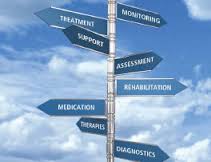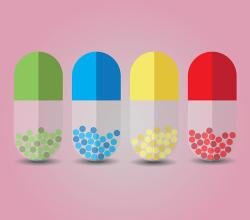There are big companies like Quintiles that run clinical trials around the world. There are local clinics that specialize in clinical trials and make a lot of money at it. There are, of course, pharmaceutical companies and device manufacturers who depend upon the results to gain marketing approval for new products. People in all those groups know a lot about trials.
There are big companies like Quintiles that run clinical trials around the world. There are local clinics that specialize in clinical trials and make a lot of money at it. There are, of course, pharmaceutical companies and device manufacturers who depend upon the results to gain marketing approval for new products. People in all those groups know a lot about trials.
But the perspective that counts is the view from you and me – patients. Most of us do not enroll in clinical trials. We don’t want to get too up close and personal with anything “experimental.” And often our doctors never tell us about available trials anyway since it can be a lot of paperwork for them. Given that most people don’t enroll in trials and new science is delayed because of it and also because most people in trials are not journalists, I thought I’d put hunt and peck to the computer keyboard and speak out about trials. I am especially motivated because I have participated twice. The first one, a leukemia trial in 2000, I believe, saved my life. And I enrolled in a second one, studying a new drug for clots in the legs (deep vein thrombosis or DVT) just a week and a half ago.
I enrolled in the DVT trial because 1) the first one worked for me and 2) I crow all the time about how patients should always consider being in a trial as a treatment option. I had to put up or shut up. So I signed on the dotted line.
This particular trial, called Hokusai, has started out to be a bit of pain. That’s because it is studying a drug to balance the thinness of your blood – a fairly tricky endeavor. The hope is the new drug could be more reliable, and “steadier” in thinning your blood to prevent bad things from happening from clots you already have in your extremities. The gold standard for 40 years has been Warfarin or Coumadin. It requires a lot of monitoring and trips to the clinic for finger sticks. Unfortunately, getting going in the new trial requires the same thing. So I have been getting to know the sixth floor of the James Medical Tower in Seattle really well – almost daily. And I am learning all about how the clinical coordinator’s five-year-old is learning to ride a bike. It has been taking a 90 minute hole out of many days. But it is all for science and maybe something better for me too. I say “maybe” because it’s a “double blind” trial which means neither me nor the medical team will know if I am getting the study medicine. I could be on the old standby and in what they call the “control group.” In the leukemia trial I knew I was getting ‘the good stuff” and I ended up receiving it a full 10 years before it was given final FDA approval for my illness. But in a non-cancer trial it usually doesn’t work that way.
I am not down on trials now. And I understand this particular trial is cumbersome because its studying DVT’s and blood thinning. You don’t want to get the balance in the blood wrong! So I drive back and forth and remain a patient patient knowing things will smooth out, that perhaps a new drug will get its day in the sun, the developers will make billions, and a lot of us may receive safer, more effective treatment. And there may be dollars saved with fewer office visits.
So it’s back to the clinic tomorrow. I need to ask the receptionists their names, how many kids they have and if any of them are learning to ride a bike. You see, while you’re in a trial you get to be good friends with the medical people. Maybe that’s not such a bad thing if your health and that of many others who follow is improved because of it.
I welcome your comments and stories of participating in a clinical trial.
Wishing you and your family the best of health!
Andrew







